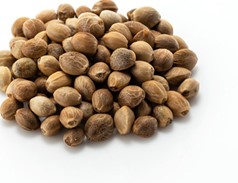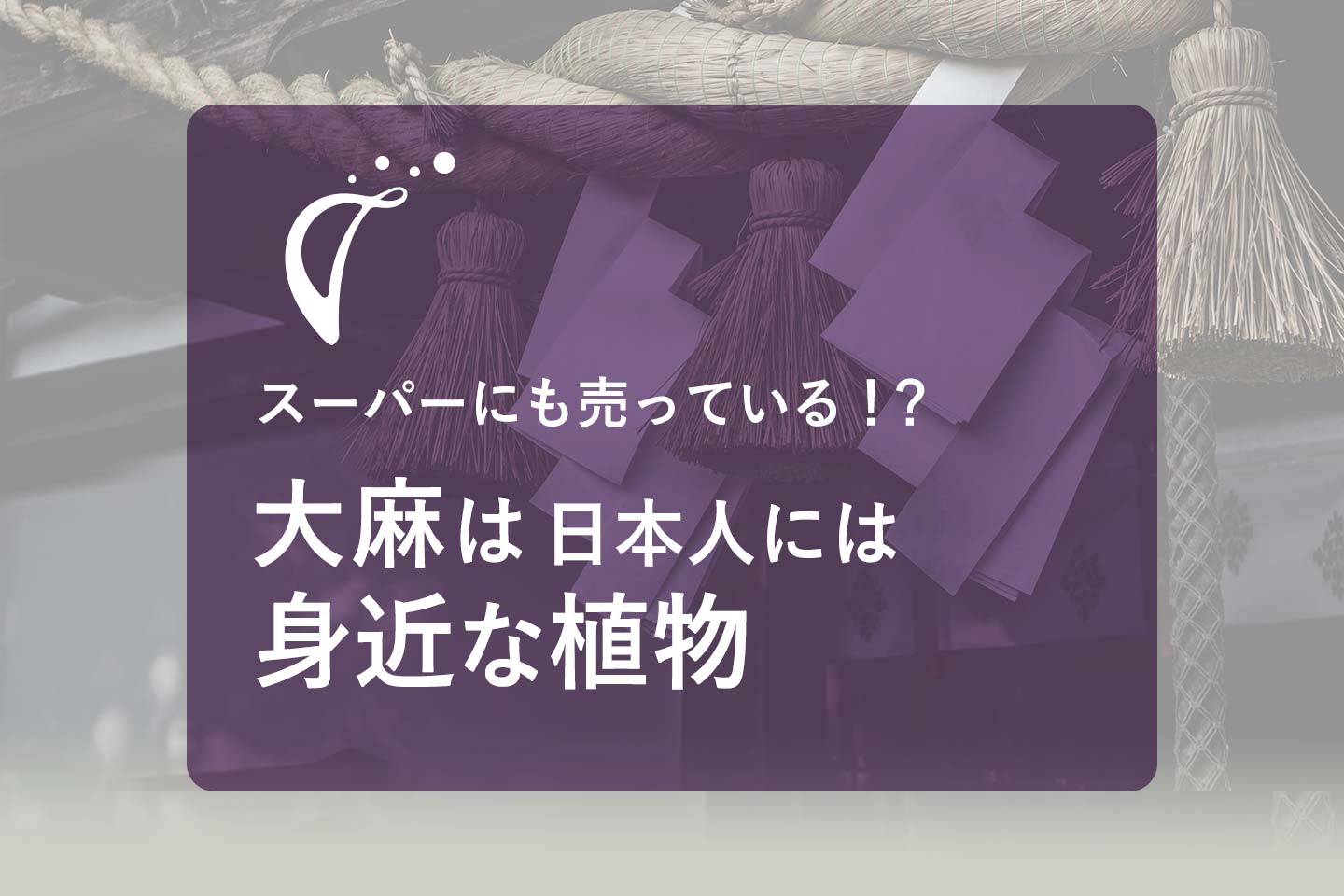Hello, this is Naoko Miyazaki from Milobina.
In this blog, I would like to tell you that the cannabis plant that is the raw material for CBD is a plant that is familiar to Japanese people.
It may come as a surprise to some people, but cannabis has a very long history in Japan, and cannabis fibers have been excavated from ruins from the early Jomon period. People have cultivated cannabis plants and used them not only for their fiber, but also as medicine and food.
Shortly after World War II, the Cannabis Control Law was enacted, and since then, the image of cannabis as an ``illegal drug'' and ``dangerous'' has taken root, but for the Japanese people, cannabis is an essential part of their daily lives. It was a familiar plant.
Although it is gradually being lost, we can still find traces of the Japanese people's history with cannabis in our daily lives. We will introduce it from four perspectives: ``cloth,'' ``Shinto/Buddhism,'' ``patterns,'' and ``food.''
1. cloth
Cloth made from hemp has been unearthed at the Toro Ruins in Shizuoka Prefecture and the Yoshinogari Ruins in Saga Prefecture, both of which date back to the Yayoi period.
Until cotton became popular in the mid-Edo period, cloth was made from various plants.Most common people's clothing is made of hemp cloth.was.
From the Meiji period to the Showa period, women were responsible for the cultivation and harvesting of cannabis plants, spinning thread, and weaving cloth, mainly in rural areas, but as cheap mass-produced cloth became widespread, It seems that this custom almost disappeared in the 1970s.
If you see old cloth in a museum, it might be hemp cloth.
2. Shinto/Buddhism
Semen hemp, a fiber made from refined cannabis plantsteeth,It has been used for purification since ancient times.It is still used as a tool for purification and purification at many shrines. Seima is tied to the exorcism skewers that priests wave from side to side during exorcisms at shrines, and they are also used as materials for shimenawa and bell rope.
after that,The ``Yokozuna'', which is only allowed to be worn by sumo wrestlers, is also made from cannabis plants.

In Buddhism, hemp cloth has been used in various ways, such as being used as a material for Buddhist statues, but the most familiar ones include the welcome fire and okuribi of the Obon festival, and decorations made from eggplants and cucumbers called ``Seiuma.'' Isn't it "Ogara" used for?
That ogara sold at supermarkets and home centers is the stem of the cannabis plant. For some reason, when I hear "marijuana at the supermarket," I get a little nervous.
3. pattern
Among the ancient Japanese patterns, one of the most well-known patterns is the hemp leaf. This pattern had already been created in the Kamakura period, but it was not until the Edo period that it was given the name ``Anaha'' due to its resemblance to a cannabis leaf.The hemp leaf pattern has the meaning of warding off evil spirits and misfortune.It has been popular as a pattern for swaddling clothes for a long time, praying for the baby's growth.
It is also famous as the pattern of the Japanese national team's uniform that became a hot topic at the 2019 Rugby World Cup, and the kimono worn by the main character's sister Nezuko in the popular comic "Demon Slayer: Kimetsu no Yaiba."

Four. food
Cannabis seeds are approximately 5 mm in diameter and covered in a hard shell. In Japan, they are called "hemp seeds" and have been eaten since ancient times. As for how long ago, hemp seeds from around 10,000 years ago were excavated from the Okinoshima ruins in Chiba.
"Hemp seeds" have been used in local cuisine in various places, but for us, the most familiar one isFoods containing hemp seeds are shichimi chili peppersis. The ingredients that make up shichimi chili pepper are not specifically determined other than chili pepper.Many shichimi chili peppers contain hemp seeds.
Although it is commonly seen as a "dangerous thing",In fact, the cannabis plant has been familiar to us Japanese people for a long time.It was. By the way, the Cannabis Control Act only regulates parts other than the stems and seeds, so you can buy Ogera and Shichimi Chili Pepper with confidence.

<Reference materials>
=Book=
“Doctor’s Talk about Cannabis and CBD” by Yushi Masataka (Saizusha)
“All about CBD” by Irene Konieczny and Lauren Wilson, translated by Naoko Miki (Shobunsha)







